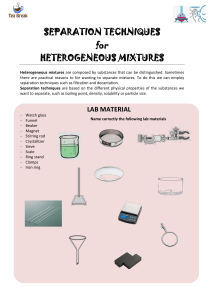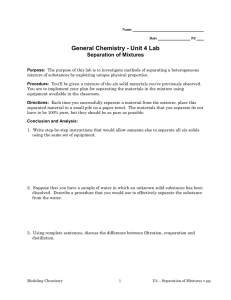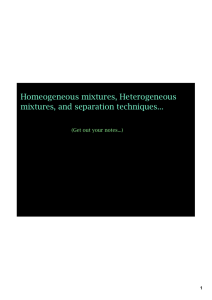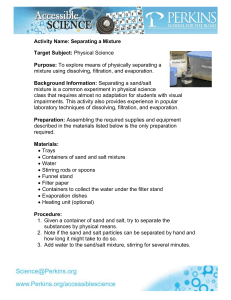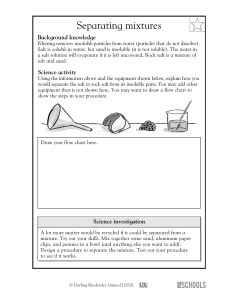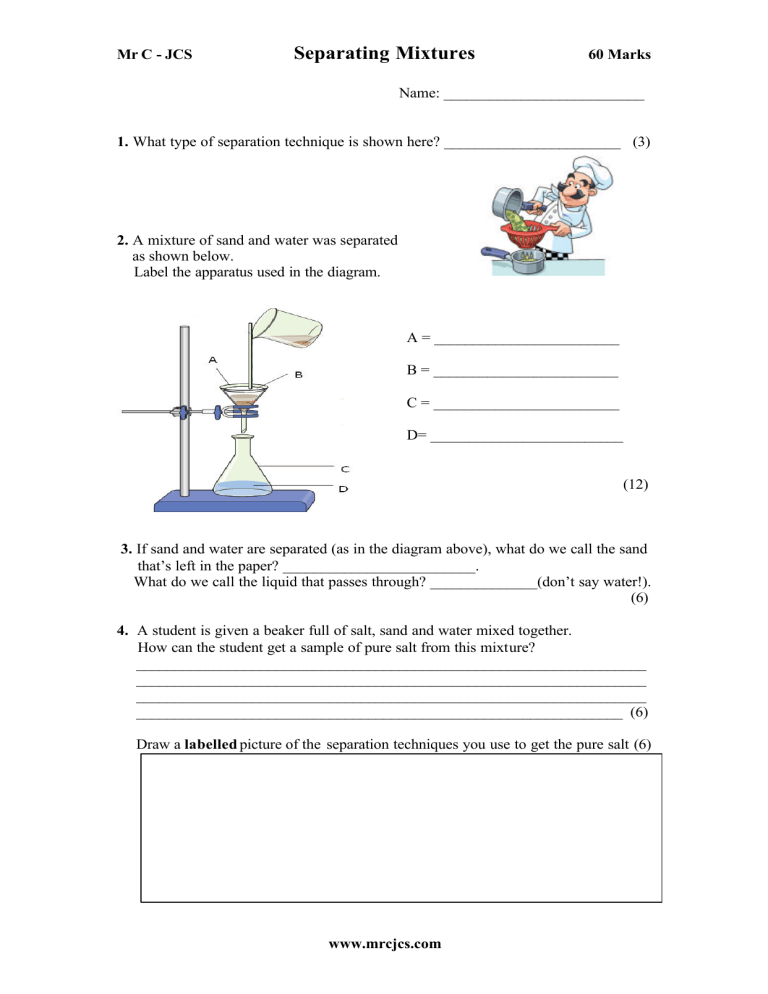
Mr C - JCS Separating Mixtures 60 Marks Name: __________________________ 1. What type of separation technique is shown here? _______________________ (3) 2. A mixture of sand and water was separated as shown below. Label the apparatus used in the diagram. A = ________________________ B = ________________________ C = ________________________ D= _________________________ (12) 3. If sand and water are separated (as in the diagram above), what do we call the sand that’s left in the paper? _________________________. What do we call the liquid that passes through? ______________(don’t say water!). (6) 4. A student is given a beaker full of salt, sand and water mixed together. How can the student get a sample of pure salt from this mixture? __________________________________________________________________ __________________________________________________________________ __________________________________________________________________ _______________________________________________________________ (6) Draw a labelled picture of the separation techniques you use to get the pure salt (6) www.mrcjcs.com Mr C - JCS Separating Mixtures 60 Marks 5. An art gallery wants to see if a painting it has is real or fake. What separation process can the gallery use to test the paint on the canvas? (3) Ans = __________________________ 6. Why does marker ink separate out into different colours when you do the experiment shown below? Ans = _____________________________________________________________ __________________________________________________________ (6) 7. What is the name of the separation technique used to separate water and alcohol? Ans = __________________________ (3) 8. Answer the questions below, (i) What are the ‘balls’ at A called? ______________________________ (ii) Does tap water enter at B or C? ______ (iii) What is D called? ______________ ________________ (iv) What process happens at E? _____________________________ (v) What liquid collects in F? ________________________ (15) www.mrcjcs.com


